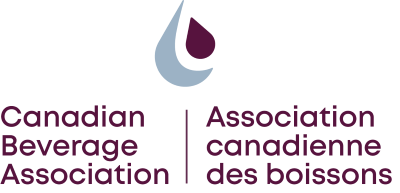Understanding all sources of caffeine continues to be a challenge for Consumers
MONTREAL, Jan. 31, 2012 /CNW/ - According to the Canadian Beverage Association (CBA), recent data published by Réseau du sport étudiant du Québec (RSEQ) shows that the energy drink consumption rate among Quebec teens is substantially lower than what was quoted by the Coalition québécoise sur la problématique du poids (CQPP) in media reports last week. The RSEQ research also re-affirms that for teens, like adults, caffeine comes from a variety of sources and focusing on any one single product category greatly oversimplifies complex issues.
The RSEQ survey, conducted with 10 000 teens between the ages of 13 and 17, shows that teensi:
- consume energy drinks daily 1%
- consume one 3 to 4 times a week 1%
- consume one 1 to 2 times a week 5%
- rarely consume an energy drink 28%
- never consume an energy drink 65%
"Last week, in an announcement by Coalition québécoise sur la problématique du poids (CQPP), Canadians were led to believe something that simply isn't true," said Justin Sherwood, President, CBA. "The research conducted by RSEQ, which reflects the energy drink consumption habits of over 10 000 Quebec teens, shows a generally low consumption of energy drinks by teens."
Caffeine Consumption: 90% from Coffee and Tea
According to Health Canada, 90% of Canadian adults' caffeine comes from coffee and tea consumptionii. Although the RSEQ study did not track teen coffee or tea consumption, the low levels of energy drink consumption (drinks that have less caffeine by volume than a filter drip coffee) suggests that teen caffeine consumption may follow a similar pattern to adults with the majority of their caffeine coming from coffee, tea or other sources. Coffee from major retail-chains can contain levels of caffeine ranging from 100 mg to 400 mg or more per serving- a Tim Hortons medium (14 oz) contains 200 mg of caffeine and caffeine can also be found in specialty beverages not normally associated with caffeine - a Starbucks' Grande (medium) White Chocolate Mocha contains 150 mg of caffeine.
Beverage Consumption Habits
Unfortunately, also not covered in the RSEQ research were teens' consumption habits as they related to milk and fruit juice. According to research conducted by Statistics Canada approximately 20%iii of teens' caloric intake comes from all beverages - including milk, 100% fruit juice, fruit drinks, regular soft drinks and other beverages. This research shows that for teens between 14 and 18 years of age milk, juice and water make up over 60% of the beverages consumed and for youth between 9 and 13 milk, water and 100% juice make up 68% of their beverage intake.
Through a series of concrete, meaningful actions the beverage industry is committed to helping promote a healthy active lifestyle which includes making informed beverage choices.
"Our members have worked very hard to ensure that there are a variety of products available to meet everyone's hydration needs," continued Sherwood. "In fact, through product innovation such as no-calorie, low-calorie, reduced-calorie and portion-controlled beverages our members have reduced the caloric content of the beverage portfolio by 25%iv."
In February 2011, the CBA and its members announced Clear on Calories, a front of pack caloric labeling initiative that was designed to help Canadians understand the caloric content and serving size of the beverages they were choosing. This initiative is currently rolling out across the country with the packaged goods component to be completed by the end of 2012.
The Clear on Calories initiative builds on a series of other concrete, meaningful actions taken by Canada's beverage industry including:
- CBA members have committed to global marketing standards that prevent marketing of beverages - other than fruit juice, milk and water - in media targeted to children under the age of 12. In addition, many beverage companies participate in the Canadian Children's Food and Beverage Advertising Initiative, which limits marketing to children under 12.
- Through the Industry Guidelines for the Sale of Beverages in Schools, the CBA and its members have delivered on our commitment to remove full-calorie soft drinks and provide more lower-calorie, nutritious, and smaller-portion beverage options in elementary, middle and secondary schools nationwide.
The Canadian Beverage Association is the national trade association representing the broad spectrum of brands and companies that manufacture and distribute the majority of non-alcoholic liquid refreshment beverages consumed in Canada.
____________________________________
i Réseau du sport étudiant du Quebec. (2011) Enquête Québécoise sur la malbouffe : 10 000 jeune se prononcent http://www.sportetudiant.com/_static/webupload/websiteDocuments/100000/rapport_d'enquete_fra_1_page.pdf
ii It's Your Health, Health Canada http://www.hc-sc.gc.ca/hl-vs/iyh-vsv/food-aliment/caffeine-eng.php
iii Gariguet, D. (2008). Beverage consumption of children and teens. Statistics Canada. Consulted on January 24, 2012 at
http://www.statcan.gc.ca/pub/82-003-x/2008004/article/6500820-eng.pdf
iv Data compiled through an inventory or registered members of the Canadian Beverage Association
Stephanie Baxter
Canadian Beverage Association
Work: (416) 362-2424
[email protected]
www.canadianbeverage.ca

Share this article